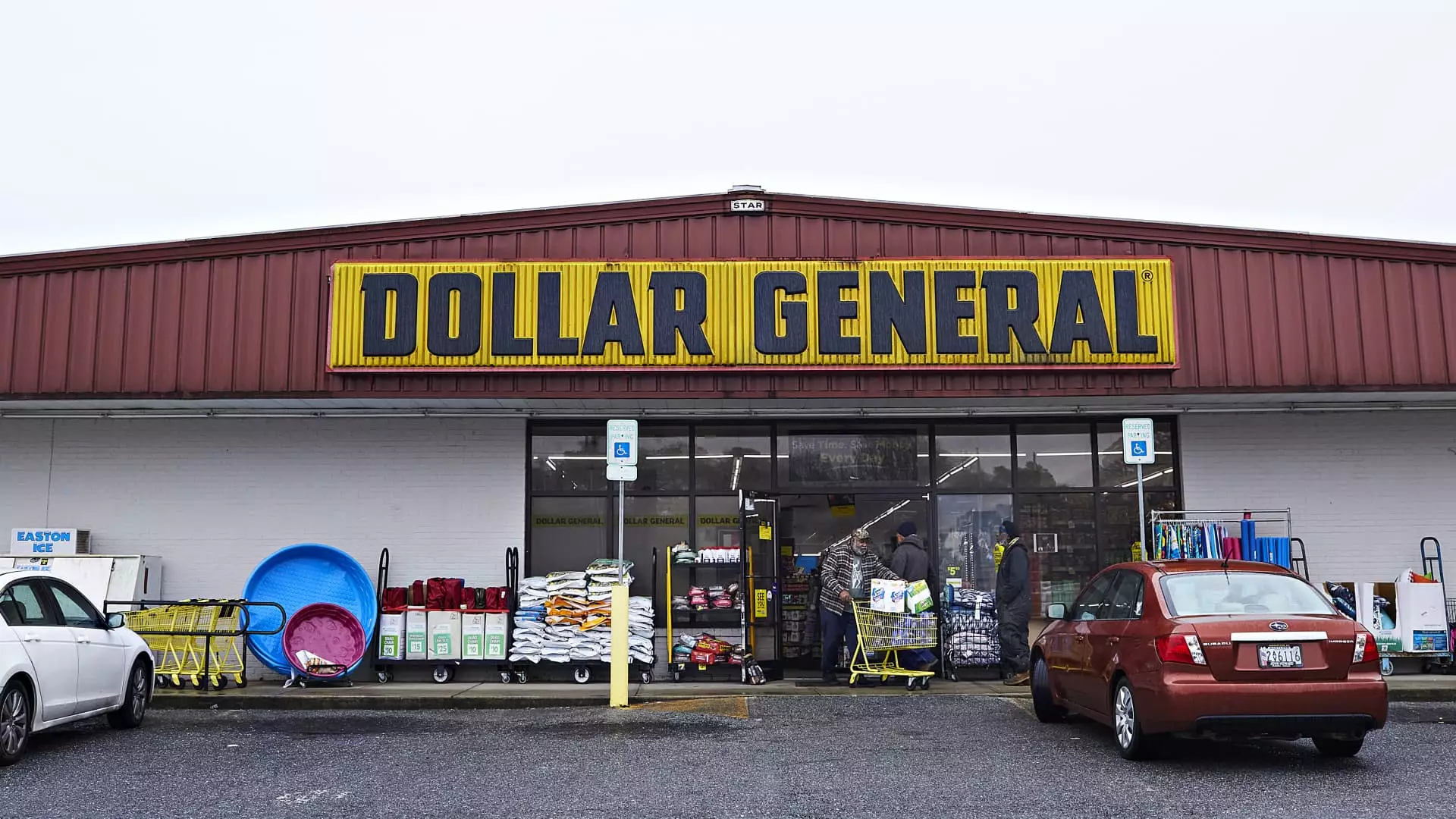Dollar General has emerged as a star performer in the stock market, recording a staggering 36% increase in value during the initial 100 days of President Donald Trump’s second term. However, this rapid growth raises important questions about the underlying economic health of both the company and the consumer sector at large. While it may be easy to celebrate Dollar General’s rise, a critical analysis reveals a more complex, perhaps troubling picture lurking beneath the surface. The fact that its stock has outperformed the entire consumer staples sector, which has only achieved a modest 6% increase, paints a picture of a defensive play fueled by uncertainty rather than robust growth. What’s fundamentally unsettling is the reliance on a market rotation towards defensive stocks, a strategy that seems to suggest that investors are bracing for a downturn rather than banking on expansion.
A Fortress Built on Perilous Foundations
One of the primary reasons for Dollar General’s resilience amidst Trump’s trade policies, particularly his imposition of steep tariffs on various trading partners, is its relatively low exposure to imports—only about 4% of its purchases come from overseas. This statistic may offer a façade of stability, but it also highlights Dollar General’s strategy of prioritizing consumables—essential goods that are not as susceptible to tariffs—over discretionary items. While this may shield Dollar General momentarily from trade shocks, it reveals a precarious situation in which too much reliance on consumables limits the company’s growth potential. It effectively puts the company in a corner, facing intense competition not just from similar discount retailers but also from retail giants like Walmart and Amazon, who dominate the e-commerce space.
The Slow Recovery from a Deep Fall
The recovery process for Dollar General has not been smooth sailing. Following a disheartening earnings report and a significant cut to its future guidance, the stock lost more than 36% of its value, only to be buoyed later by a turnaround strategy initiated by CEO Todd Vasos. While a back-to-basics approach may yield short-term gains, it is reminiscent of a temporary patch rather than a sustainable solution. The long-term viability of Dollar General depends on more than just shoring up current stores; it requires an innovative approach to fend off the accelerating growth of competitors that have more to offer in terms of online convenience and diverse product lines.
The Dangers of Complacency
Investors’ enthusiasm for Dollar General’s stock performance might lead to a dangerous assumption: that the company has maneuvered through the worst of economic uncertainty and is now on the path to sustained prosperity. Yet the competitive landscape continues to shift rapidly, with Walmart’s delivery service, Walmart+, gaining traction among shoppers. The “800-pound gorilla” is not merely an overused cliché; it symbolizes a substantial market threat that Dollar General must confront continuously. The strategy of trading down from higher-end retailers might help capture middle-income shoppers temporarily, but it is a double-edged sword, highlighting an erosion of Dollar General’s core customer base—individuals needing to stretch their budgets due to inflation.
Social Spending Cuts: The Hidden Threat
Worryingly, broader societal and economic factors stand to exacerbate Dollar General’s challenges. The potential expiration of Trump’s 2017 tax cuts and looming changes to the Supplemental Nutrition Assistance Program (SNAP) threaten the very demographic that serves as Dollar General’s backbone—low-income consumers. As purchasing power diminishes amid potential cuts to social welfare programs, there is a risk that even loyal customers could become increasingly price-sensitive or abandon the store. Feldman’s observations about the demand from middle-income “trade-down” shoppers barely mask the troubling implications that the company could be retreating into a more vulnerable market niche.
In this political and economic landscape, the sheer volatility of Dollar General’s stock narrative should serve as an urgent reminder that emphasis must be placed on adapting and evolving in the face of uncertain macroeconomic conditions. A reliance on defensive stocks in a soft economy might yield short-term gains, but it also masks deeper undercurrents of risk that can unravel at any moment. This might not only affect Dollar General’s stock but also signal broader economic concerns that merit serious attention.

